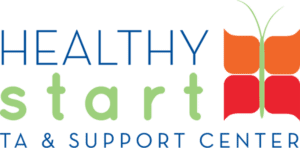Overview
Project Directors/Managers are responsible for communicating with Healthy Start (HS) staff, HS participants, DHSPS Project Officers, community partners, and others. Effective communication helps establish shared expectations and an understanding of each players’ role in achieving the HS program goals. Project Directors/Managers can also help promote the expertise and achievements of the HS program among national partners and stakeholders.
Developing a Communications Plan
Your communication plan should describe the different modes of communication and technology your project will use to meet the communication needs and goals for the following groups:
- HS Participants will need information about the HS program, health education around specific topics, and communications to support care coordination.
- HS Staff will need information about the goals and objectives of the HS program, team roles and responsibilities, and performance expectations.
- DHSPS Project Officers and leadership will need regular status reports, reporting requirements as detailed in your Notice of Award, and timely responses to requests for information.
- Community partners and stakeholders will need information to support your collaboration and coordination and build your common agenda. This includes alignment with your state’s Title V programs to promote cooperation, integration, and dissemination of information with statewide systems.
To guide your team in identifying and determining how to respond to the above communication needs, consider the following questions:
- Who are we trying to reach?
- What information does our audience want and need?
- What is our audience’s use of and comfort level with various communication tools?
- What do we want to accomplish with this particular audience?
- Is someone else already doing this? What partnerships do we need to pursue to learn more about this audience and develop a response?
- What resources (e.g., funding, time, capacity, human resources) do we have to implement and maintain this strategy?
- What tools are most appropriate for this target audience, objectives, and strategy?
- What would success look like? How can it be measured?
Other Resources
- Stakeholder Register: A project management document, which contains information about all project stakeholders.
- Power/Interest Grid: Tool to help identify and document the support or potential impact each stakeholder can generate, and how they fit into the larger strategy.
- Stakeholder Analysis Matrix: Template to document stakeholder management strategies with the goal of increasing support and minimizing negative impacts.
